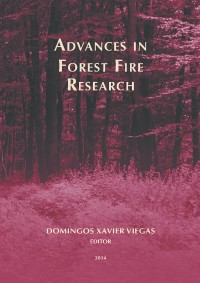Please use this identifier to cite or link to this item:
https://hdl.handle.net/10316.2/34311| DC Field | Value | Language |
|---|---|---|
| dc.contributor.author | Oliveira, Ricardo | |
| dc.contributor.author | Quesada, Clara | |
| dc.contributor.author | Viegas, Domingos X. | |
| dc.contributor.author | Freitas, E. | |
| dc.contributor.author | Raposo, J. | |
| dc.date.accessioned | 2014-10-24T11:21:20Z | |
| dc.date.accessioned | 2020-09-09T21:31:25Z | - |
| dc.date.available | 2014-10-24T11:21:20Z | |
| dc.date.available | 2020-09-09T21:31:25Z | - |
| dc.date.issued | 2014 | - |
| dc.identifier.isbn | 978-989-26-0884-6 (PDF) | |
| dc.identifier.uri | https://hdl.handle.net/10316.2/34311 | - |
| dc.description.abstract | The problem of forest fires in the Wildland Urban Interface (WUI) areas is increasing in all countries that have problems with forest fires. This phenomenon is well known and studied in USA, Canada or Australia. In European countries the problem is identified and studied. In the last 50 years Portugal experienced an unprecedented rural exodus in all its history. Rural areas faced the decreasing of population every year on the one hand emigration, on the other hand young people moved to urban areas. This led to difficulties of management and increased problems related with combat of wildland fires. The problem of WUI is growing so fast in Portugal in last decade, mainly as a result of the events occurred in 2003, 2005, recently 2012 and 2013. This problems of WUI were identified as a priority, immediately afterwards to personal safety. Given the importance of spot fires in the context of WUI fires the Centre of Forest Fire Studies (CEIF) developed several studies to increase the knowledge on this problem. A study of the probability of penetration of firebrands in typical Portuguese house roofs was carried out. Studies on ember aerodynamic transport and on new ignitions inside houses caused by embers. In particularly this second work about ignitions inside houses is being developed with test that involves the generation of embers in a special device designed to create embers, similar to the ones generated in a real forest fire that can transpose structural gaps of the models tested and start a new fire inside of the structure. In order to carry out this study program a firebrand generator similar to the Baby Dragon developed at NIST by Suzuki and Manzello in 2011 was built. The original device was used in 2013 by Manzello for a similar study. | eng |
| dc.language.iso | eng | - |
| dc.publisher | Imprensa da Universidade de Coimbra | por |
| dc.relation.ispartof | http://hdl.handle.net/10316.2/34013 | por |
| dc.rights | open access | - |
| dc.subject | wildland-urban interface | eng |
| dc.subject | wildland-urban interface | eng |
| dc.subject | firebrand generator | eng |
| dc.subject | firebrand particles | eng |
| dc.subject | burning particles | eng |
| dc.title | Firebrand generator system applied to wildland-urban interface research | por |
| dc.type | bookPart | por |
| uc.publication.firstPage | 759 | - |
| uc.publication.lastPage | 765 | - |
| uc.publication.location | Coimbra | por |
| dc.identifier.doi | 10.14195/978-989-26-0884-6_84 | - |
| uc.publication.section | Chapter 3 - Fire Management | por |
| uc.publication.digCollection | PB | por |
| uc.publication.orderno | 84 | - |
| uc.publication.area | Ciências da Engenharia e Tecnologias | por |
| uc.publication.bookTitle | Advances in forest fire research | - |
| uc.publication.manifest | https://dl.uc.pt/json/iiif/10316.2/34311/211423/manifest?manifest=/json/iiif/10316.2/34311/211423/manifest | - |
| uc.publication.thumbnail | https://dl.uc.pt/retrieve/11173322 | - |
| uc.publication.parentItemId | 53868 | - |
| uc.itemId | 70295 | - |
| item.fulltext | With Fulltext | - |
| item.grantfulltext | open | - |
| Appears in Collections: | Advances in forest fire research | |
Files in This Item:
| File | Description | Size | Format | |
|---|---|---|---|---|
| 978-989-26-0884-6_84.pdf | 1.97 MB | Adobe PDF |  |
Items in DSpace are protected by copyright, with all rights reserved, unless otherwise indicated.
